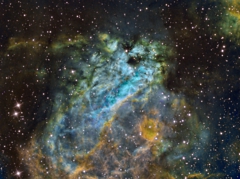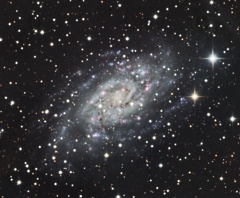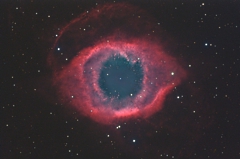PixInsight Intensive Workshop
By Vicent Peris
July 26 – August 1 2015, Alcanalí, Alicante, Spain
This workshop aims at giving a comprehensive operational/technical understanding of Pixinsight to a small group of participants (5–10) over the course of 7 concentrated working days.
Participants will bring all their own unprocessed data sets which will be processed during the week. The structure of the seminar will allow participants an in-depth view of Pixinsight, with the goal of having a total immersion in the process of the image creation.
Workshop language will be English.
Workshop Dates and Venue

The workshop will take place in a Mediterranean villa which houses also several telescopes and domes.
The workshop will start on Sunday, July 26th, and will run through Saturday, August 1st. We suggest arriving in the area on Saturday, July 25th, and departing on Sunday, August 2nd.
Please contact Colin Cooper (Astroinspain(at)yahoo(dot)com) for further details regarding logistics.
Number of Participants
The aim of this workshop is to have a close encounter with the PixInsight platform and the teacher, so a maximum of 10 participants will be allowed for the full week. Each participant should bring his/her laptop and portable drive to share the data to be processed.
Rates and Registration
With a total duration of 45 hours, the registration price is 750 Euros. Click the button below to register through PayPal.
Lodging Options
You need to make your own boarding/meals arrangements.
The following link gives an overview of the area from a touristic point of view:
http://www.spain-holiday.com/Jalon
Near the villa there are several accomodation options:
- El Cid Bar & Restaurant, 10 km away from the villa, is a restaurant and bar that also has accomodation. The owners are English and very friendly; the rates are 49 EUR for a double room including continental breakfast.
- Denia Marriott La Sella is a five-star hotel about 20-min drive from the villa.
- TripAdvisor gives an overview of local restaurants within minutes from the villa.
Workshop Sponsors
Workshop Methodology
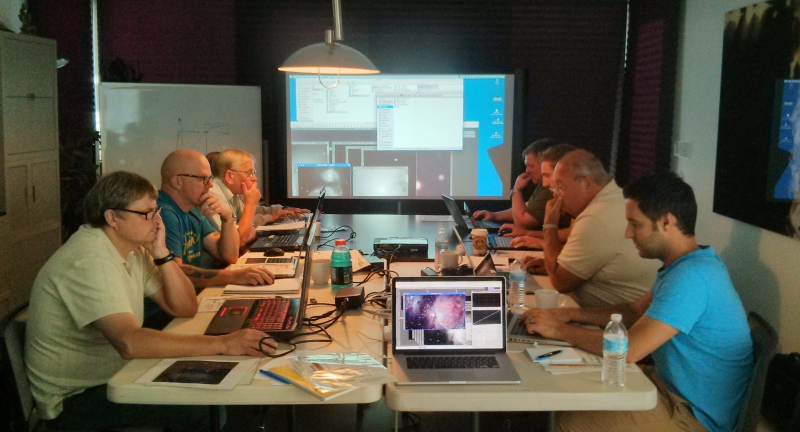
The aim of this workshop is to get everybody in the class up to speed using Pixinsight. The small size of the classroom will ensure that the class moves together at a steady pace, learning by doing. The first day will be dedicated to understand the graphical interface and general methodology of PixInsight.
From day two to six the workshop is divided in common and individual processing sessions. The common sessions will describe key techniques and entire processing examples. Therefore, starting from completely raw data sets, each participant will learn to assemble / generate unprocessed data into respective master files while gaining an understanding of how to pre-process the raw data for optimal signal-to-noise levels. The post-processing will be focused on singular techniques that will cover the main imaging needs of the participants.
Workshop Documentation
Each person attending the intensive workshop will be provided with a workshop manual. This manual will have detailed articles on start-to-finish examples. The manual will be delivered as a PDF document.
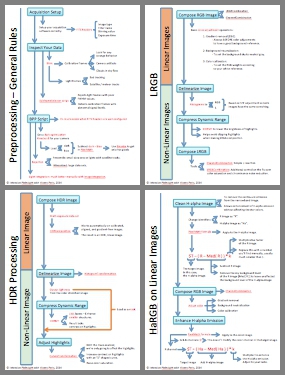
Workflow Charts
Each participant will be given a full set of PixInsight workflow charts describing the techniques reviewed during the workshop. Covering the main concepts in a visual style, these charts will help you to carry out your own work at home.
Workshop Program

Learning to Navigate the PixInsight Platform
An introduction to the PixInsight platform and its graphical user interface.
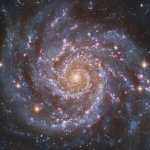
LRGB Composition Techniques
We'll review the most basic image processing techniques for astrophotography. It's strongly recommended that participants watch Vicent's videotutorials about color calibration and LRGB techniques prior to attending the workshop.
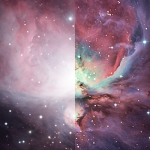
Dynamic Range Management Techniques
PixInsight has a highly automated workflow for the dynamic range management of the image. We'll review the use of HDRComposition and HDRMultiscaleTransform tools as well as basic masking techniques for local contrast enhancement.

The Hubble's Palette
Building a Hubble's palette composite in PixInsight is extremely easy. We'll review an effective workflow composed of only four steps that gives a good tonal representation in these narrowband images.
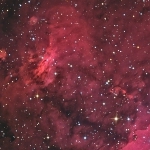
HaLRGB Composition Techniques
A review of the effective methods designed by Vicent Peris to enhance line emission objects in your broadband images.
Start-to-Finish Examples
In this workshop we'll review the following examples:
Click on the images for full-size versions.

Start-to-Finish Example — M31
Data provided by Adrien Richardson (click on the image to see a full-size version. This example will cover mainly these topics:
- Data set inspection with Blink and SubframeSelector.
- Multiple exposure set management in the BatchPreprocessing script.
- HDR image assembling with HDRComposition. LRGB with high dynamic range L component and low dynamic range RGB components.
- H-alpha enhancement in linear images.
- Denoising and masking techniques.

DSLR data set — Widefield Milky Way
Data provided by Georg Viehoever (click on the image to see a full-size version. This example will cover mainly these topics:
- DSLR data preprocessing.
- Image integration optimization.
- Contrast enhancement through lightness masks.
- Large-scale noise reduction.
Sample Images Processed by Students of Previous Intensive Workshops
Click on the images for full-size versions.
About Vicent Peris

With more than a 15-year career as an astrophotographer, Vicent Peris (Valencia, Spain, 1980) has been working for the last 7 years at the Astronomical Observatory of the University of Valencia (OAUV). He is now leading the world-renowned astrophotographic programs at Calar Alto Observatory (CAHA) with the 3.5 meter and 1.23 meter Zeiss telescopes, the latter in collaboration with the Documentary School of Astrophotography (DSA), applying innovative image processing techniques and software tools. This is the first astrophotography project in the world with access to the observational time of professional telescopes.
You can see some of the published images of the Calar Alto project on the Gallery section of PixInsight's website, as well as some of Vicent's articles about his image processing techniques on the Processing Examples section.
His works have been published and awarded by some of the most reputed publications worldwide, such as APOD, Scientific American, National Geographic, Bad Astronomy Blog, and Sterne und Weltraum.
Vicent is also the official astrophotographer of the ALHAMBRA Survey, a deep cosmological survey conducted by an international scientific collaboration, acquired from Calar Alto Observatory using the 3.5 meter Zeiss telescope. This survey is the first in the world to use a new instrumental technique known as photometric redshifts, in which low-resolution spectra for each object in an image are obtained by using a large, 23 narrow-filter set covering the 3500 – 9500 angstrom light band. You can see some image samples at Vicent's website.
Vicent has also successful experience in forensics and is currently working as an image processing specialist for the Spanish National Police department since two years.
For more information about Vicent's works, please download his portfolio.


